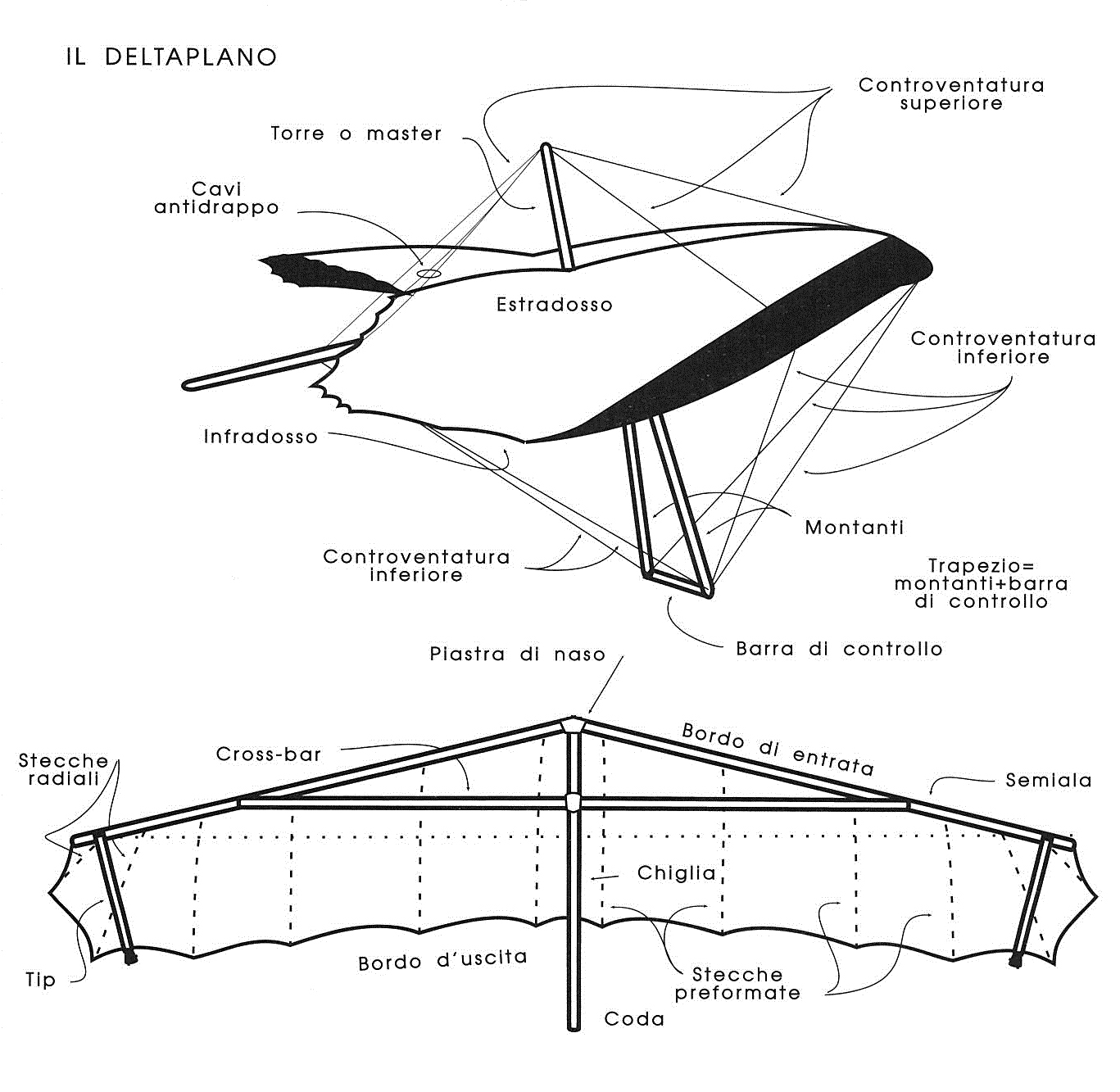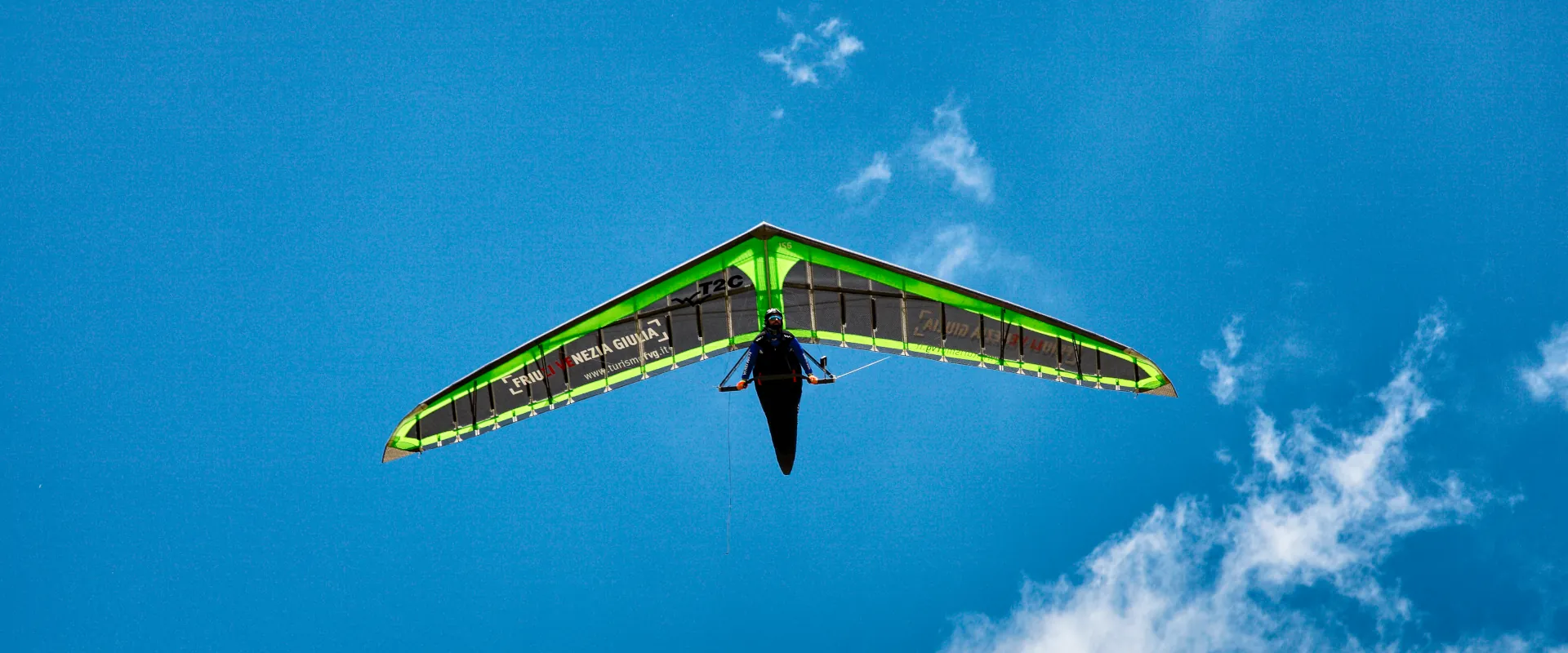The hang-glider – How is it made
The hang-glider is a structure of tubes, cables, canvas and bolts suitably designed and arranged to allow the craft and pilot to fly in a very precise range of weather conditions, guaranteeing maximum mechanical reliability. Although today’s crafts have the capacity to withstand accelerations of up to 6 Gs (i.e., when the apparent weight increases to 6 times its real weight), it must never be forgotten that in adverse weather conditions or during aerobatic manoeuvres, these structural limits are exceeded, and even the best craft in the world can break down. Finally, we must remember that even slight damage can significantly compromise the craft’s resistance capacity and that assembly and maintenance are therefore of vital importance (it must be said). The structural resistance and self-stability of the craft are tested and certified at origin by special bodies: the best known are the American, German and Swiss ones where, out of necessity, Italian kites are also tested too (in absence of a corresponding local body). In essence, a hang-glider is a pair of wings held open and horizontal by two “cables”, one upper and one lower. The upper cable is supported by the king post (or master), while the lower cable is supported (in flight) by the trapeze, inside which the pilot finds space.

As can be seen, some terms are taken “verbatim” from classical aeronautics while others are typical of this craft. The set of cables is called the rigging (upper and lower) while the two wing surfaces constitute the extrados (top) and the intrados (bottom).
Come considerations on past and future evolution
At the beginning of the 1980s, something peculiar happened in the evolutionary history of the hang-glider: until then, any structural innovation coincided with an unquestionable improvement in all relevant parameters and thus rendered previous models outdated. However, fourth generation (Atlas, Mars and the like) and fifth-generation wings differ in characteristics but the latter cannot be considered superior in an absolute sense. In other words, a fifth-generation wing offers greater speed and better efficiency, but in terms of management it is more challenging to handle, especially in the landing phase and in thermals. For this reason, even today, a large number of fourth-generation hang-gliders (the so-called intermediates) are produced and marketed for use in the first years of flying. To be fair, it should be added that today’s fourth-generation wings have been modified from the first models and are now designed and built precisely for those just starting to fly. Similarly, the manufacturers’ efforts are divided into two distinct directions: competition kites, with very high performance but too demanding for an inexperienced pilot or one who rarely flies, and kites for those who want to have fun in peace. It will be up to the pilot to decide in time whether to favour speed and efficiency or ease and docility.
Excerpt from: “Manuale di Volo Libero” (Free Flight Manual)
by Andrea De Rosa and Giuseppe Violante
http://www.manualedivololibero.com
Excerpt from: “Manuale di Volo Libero” (Free Flight Manual)
by Andrea De Rosa and Giuseppe Violante
http://www.manualedivololibero.com



